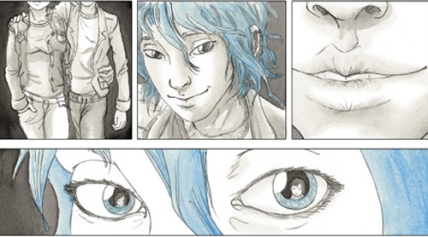Hi, it’s been a while! I meant to keep up with this blog every month throughout 2017 too, but my final year of university was coming to a chaotic end, so I couldn’t find the time until most of the year had passed.
HOWEVER, I hope to keep track of my 2018 books in a more efficient monthly fashion! In the meantime, I thought I would do a short post rounding up my favourite reads from this year. Here goes…
1. A Tale for the Time Being by Ruth Ozeki
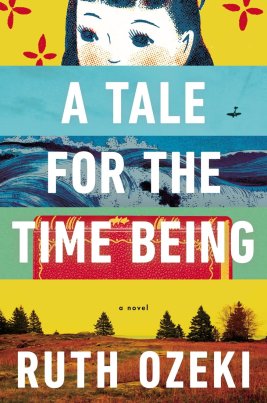 This book blew me away! The premise itself is really close to the kinds of ideas I centre my artistic practice around, so I was captivated immediately. It begins with an author on an island in British Columbia finding a diary and other objects washed up on the beach in a ziploc bag. The diary is written by a Japanese teenager called Naoko, or Nao, who used to live in the United States, but returns to Japan. Her life back in Japan is bleak; her father is unemployed and depressed, she is bullied by her schoolmates, and misses her old life. However, the chapters written in Nao’s voice are both peppy and humorously cynical, and I felt myself really feeling for her. The other parts of the novel are told by Ruth, the author who finds the diary, and her feelings towards Nao and her serendipitous presence in her life, by way of the diary.
This book blew me away! The premise itself is really close to the kinds of ideas I centre my artistic practice around, so I was captivated immediately. It begins with an author on an island in British Columbia finding a diary and other objects washed up on the beach in a ziploc bag. The diary is written by a Japanese teenager called Naoko, or Nao, who used to live in the United States, but returns to Japan. Her life back in Japan is bleak; her father is unemployed and depressed, she is bullied by her schoolmates, and misses her old life. However, the chapters written in Nao’s voice are both peppy and humorously cynical, and I felt myself really feeling for her. The other parts of the novel are told by Ruth, the author who finds the diary, and her feelings towards Nao and her serendipitous presence in her life, by way of the diary.
This book seemed to me like a musing on temporality. Time is a big feature of the narrative. Lost time; endings; presence on earth; connections to other humans. Using fiction or writing or documentation to reach forward or back through time. Leaving your mark on the world. I don’t know what I can say to do justice to the big themes and the masterful narrative Ozeki structures to construe them! I think it was a great portrayal of mental illnesses too, be these depression or dementia. I just thought it was beautiful.
“It’s like I’m reaching forward through time to touch you, and now that you’ve found it, you’re reaching back to touch me! . . . It’s like a message in a bottle, cast out into the ocean of space and time.”
2. Zami: A New Spelling of My Name by Audre Lorde

WOW! I read this in January and was completely absorbed by it. Audre Lorde was, in her words, a “black, lesbian, mother, warrior, poet” and is prolific in her writing about race, intersectional feminism, and gay rights. Zami is a Carriacou name for women who work together as friends and lovers. Lorde calls this book a biomythography; it reads as an autobiography, but works history and myth into it too. It begins with her upbringing in Harlem, NY in the 30s and 40s, being first generation, experiencing racism, her relationship with her parents, and follows her through school, college, work, and her relationships with women.
What sets this autobiography apart is Lorde’s masterful, engaging and relatable storytelling; kudos to her for making it so identifiable despite me having a very different life to hers! Lorde critically examines what it means to be a queer black woman through all these different instances in her life; how different groups bounce off of her, how she moves through the world, how it affects her intimate relationships. Anyone interested in feminism or queer issues should definitely read this memoir.
3. Tove Jansson: Work & Love by Tuula Karjalainen
It’s no secret that I am a huge Tove Jansson fan. In fact, I read this autobiography whilst I was in Finland on a artistic research trip, learning about Jansson’s life and the places she lived! I love her art, her fiction, and of course the Moomin series which she is most famous for. Work & Love is thick and full of colour images of notebooks, sketches, art, and family photographs – it’s visually very appealing.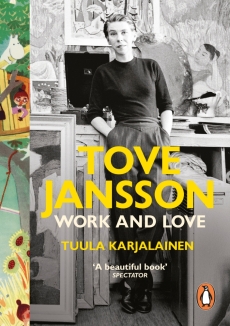
I had already read Life, Art, Words, another biography by Boel Westin, and whilst a lot of the information was largely the same, I think I enjoyed Work & Love more. Perhaps this was due to a greater focus on Tove’s romantic relationships and young adulthood. As the title implies, I felt like Work & Love really delved into how her career started, the multiplicity of artistic disciplines she stretched herself across, but also the relationships which changed her life. I am talking about Vivica Bandler, the woman Tove first fell in love with as a young woman, and later, her life partner, Tuulikki Pietila.
Work & Love didn’t erase or gloss over Tove Jansson’s relationships with women, nor does it sensationalise them, and I appreciate that. The secrecy surrounding her relationship with Vivica fed into her paintings and even her Moomin stories. Her and Tuulikki travelled the world together, built a cabin on a remote island together and lived there! These relationships and where they are situated in history are important; it’s important to remember them truthfully. I thought that Karjalainen’s biography provided a fascinating look at Tove’s life, and how jam-packed it was full of drama, joy, work, and love.

4. Pond Smelt by Jane Mai
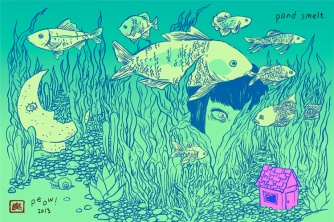 Pond Smelt is a graphic novel by artist and cartoonist Jane Mai. I happened upon a digital version of this on twitter, and I’m really glad I stumbled across it.
Pond Smelt is a graphic novel by artist and cartoonist Jane Mai. I happened upon a digital version of this on twitter, and I’m really glad I stumbled across it.

Pond Smelt is essentially about the game Animal Crossing – for those who don’t know, it’s a videogame where you move to a village inhabited by talking animals, and you’re the only human. It sounds absurd, but it was a staple of my 2006 childhood experience, has a great nostalgic game soundtrack, and the dialogue is irreverent and cute at the same time. Pond Smelt follows Janey, a lonely human in a strange town, who doesn’t know quite how to interact with the eccentric personalities of her neighbouring animals. It’s sparsely drawn, funny, but melancholy. Everyone seems like a drifter, and sighs existential thoughts now and then. It’s a beautiful look at the repetitive nature of existing in a virtual and slightly surreal environment. I really liked it, and not just because I’m a big fan of the Animal Crossing games. (But there are quite a few in-game in-jokes that Mai works in there which I appreciated.)
You can find Pond Smelt here.
5. Witch Light by Susan Fletcher
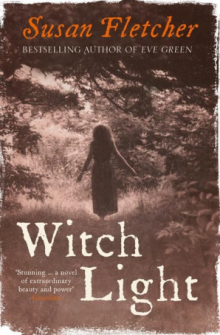
Witch Light is a historical fiction novel, based on the massacre at Glencoe in February 1692. What makes it amazing is that it’s told from the point of view of drifter, healer, witch, and outcast Corrag. The daughter of a witch and sex worker in a small village on the border between England and Scotland, she is forced to flee when the village turn against their unconventional family. Corrag rides a horse to the Scottish highlands, where she makes a home for herself in the glen, slowly befriends some of the Campbell clan, and eventually bears witness to the bloodshed.
I enjoyed this because it was whimsical in it’s detail; Corrag finds beauty and magic in nature, but it is ultimately a story about her survival and means of supporting herself.
She gains trust and respect from her knowledge of herbs and healing. The dangers presented in the book are not fantastical; they are realistic. Corrag faces homelessness, physical and sexual violence, exposure and loneliness, and these issues are dealt with in a sensitive way.
Trigger warning – I should mention that this book has a graphic description of sexual assault in it.
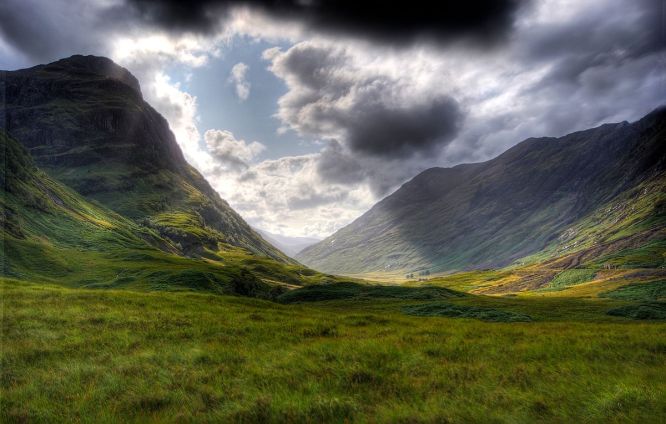
Honorable mentions
I would be remissed if I didn’t mention these other great reads of 2017.
This slideshow requires JavaScript.
Doll Hospital, edited by Bethany Rose Lamont
I was lucky to get a copy of issue 3 of Doll Hospital, an art & literature print journal on mental health. This also included a digital PDF of issue 4, which I can read on my phone on my commute! I reviewed issue 2 in my September 2016 blog post, and my feelings towards issues 3 and 4 are largely the same. It is simply an honest collection of people’s experiences and feelings regarding mental illness and trauma. Doll Hospital has helped educate me, and it has been there for me when I am struggling too. I think we are lucky to have a mental health journal which prioritises really marginalised voices and narratives.
Find and support Doll Hospital Journal here.
Stir Fry by Emma Donoghue
Stir Fry is a short lesbian novel set in 1990s Dublin. The set up is a little cheesy; a young student moves in with two gay women – but she doesn’t realise they’re gay! You can see where this is going. However, I found it a warm and comforting coming-of-age lesbian book; it’s kind of slice-of-life actually. And I liked the 90s nostalgia – remember payphones?!
Flowering Harbour by Seiichi Hayashi
This graphic novel was gifted to me by my friend Holly for my birthday. It is beautifully drawn, in deep blue with rainy lines, and very melancholy. Super existential, super beautiful, the perfect graphic novel.
After Nothing Comes by Aidan Koch
Aidan Koch is one of my favourite artists; she makes drawings, comics, books and paintings. Her comics hint at a narrative, usually fragmented conversations and settings.
After Nothing Comes is a compilation of her finished and unfinished comics. My friend Sofie lent me this book, and it had a big influence on my own art practice. I like that Koch includes ‘imperfections’ in this – pencil smudges, torn or unevenly cut paper; it makes it real and less intimidating. Art can be small and human.
Find Aidan Koch’s work here.
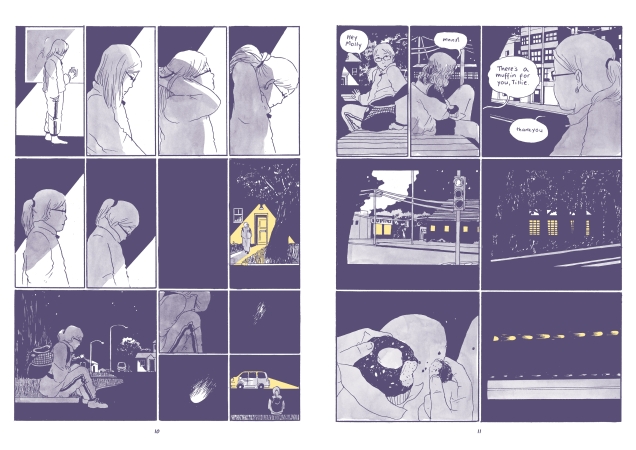
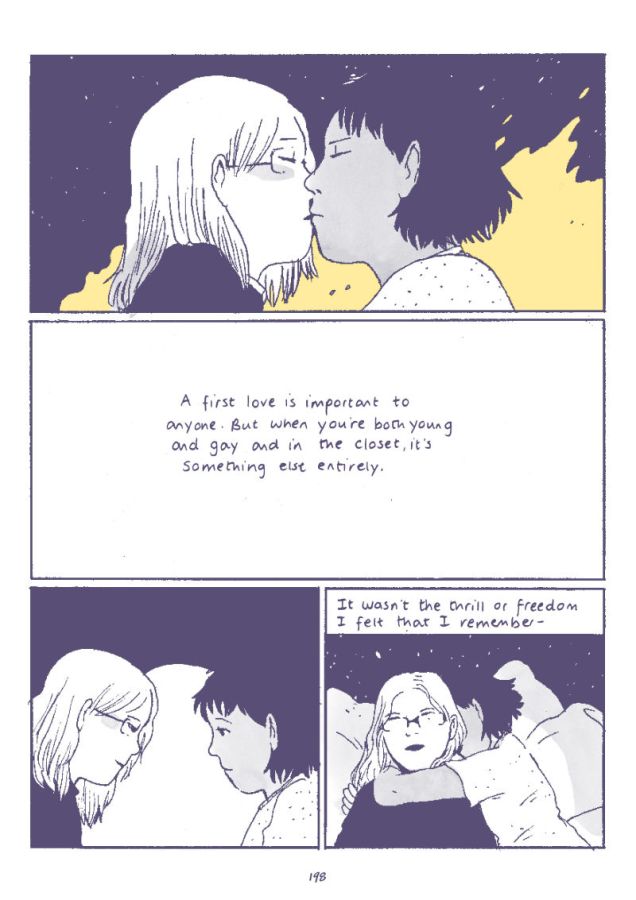
 This book blew me away! The premise itself is really close to the kinds of ideas I centre my artistic practice around, so I was captivated immediately. It begins with an author on an island in British Columbia finding a diary and other objects washed up on the beach in a ziploc bag. The diary is written by a Japanese teenager called Naoko, or Nao, who used to live in the United States, but returns to Japan. Her life back in Japan is bleak; her father is unemployed and depressed, she is bullied by her schoolmates, and misses her old life. However, the chapters written in Nao’s voice are both peppy and humorously cynical, and I felt myself really feeling for her. The other parts of the novel are told by Ruth, the author who finds the diary, and her feelings towards Nao and her serendipitous presence in her life, by way of the diary.
This book blew me away! The premise itself is really close to the kinds of ideas I centre my artistic practice around, so I was captivated immediately. It begins with an author on an island in British Columbia finding a diary and other objects washed up on the beach in a ziploc bag. The diary is written by a Japanese teenager called Naoko, or Nao, who used to live in the United States, but returns to Japan. Her life back in Japan is bleak; her father is unemployed and depressed, she is bullied by her schoolmates, and misses her old life. However, the chapters written in Nao’s voice are both peppy and humorously cynical, and I felt myself really feeling for her. The other parts of the novel are told by Ruth, the author who finds the diary, and her feelings towards Nao and her serendipitous presence in her life, by way of the diary.


 Pond Smelt is a graphic novel by artist and cartoonist Jane Mai. I happened upon a digital version of this on twitter, and I’m really glad I stumbled across it.
Pond Smelt is a graphic novel by artist and cartoonist Jane Mai. I happened upon a digital version of this on twitter, and I’m really glad I stumbled across it.


 Citizen: An American Lyric blew me away. It’s quite hard to describe what this book is, formally; it’s somewhere between poetry, prose, and essays. Citizen is about racism against African Americans in the USA and how it pervades the everyday, ranging from underlying microaggressions, to violent hate crimes. Rankine deals with her and others’ experiences of racism, collective and individual trauma, and she deals with it so powerfully. Everyone should read this book. It’s an education, it’s a protest, it’s important.
Citizen: An American Lyric blew me away. It’s quite hard to describe what this book is, formally; it’s somewhere between poetry, prose, and essays. Citizen is about racism against African Americans in the USA and how it pervades the everyday, ranging from underlying microaggressions, to violent hate crimes. Rankine deals with her and others’ experiences of racism, collective and individual trauma, and she deals with it so powerfully. Everyone should read this book. It’s an education, it’s a protest, it’s important.
 The four different narratives are not told in a linear time frame, and range greatly in perspective. Le Guin is a master at creating worlds through giving us windows, shining light on a wider universe from different points. From an elderly person, post-liberation on Yeowe and how she deals with the aftermath of slavery and forming a new society, to an alien outsider sent by the Ekumen to improve diplomatic relations with other planets, Le Guin portrays a place which sounds alien but is rooted in truth. Comparisons can of course be made between colonialism, Europe’s slave trade, and American plantations, and the atrocities that happened to millions of Africans and natives as a result. It’s an exploration of race, feminism, slavery, trauma, unforgivable lack of humanity, and it’s shocking to be reminded that these awful things happened on Earth recently. Science-fiction anthropological realism at its best.
The four different narratives are not told in a linear time frame, and range greatly in perspective. Le Guin is a master at creating worlds through giving us windows, shining light on a wider universe from different points. From an elderly person, post-liberation on Yeowe and how she deals with the aftermath of slavery and forming a new society, to an alien outsider sent by the Ekumen to improve diplomatic relations with other planets, Le Guin portrays a place which sounds alien but is rooted in truth. Comparisons can of course be made between colonialism, Europe’s slave trade, and American plantations, and the atrocities that happened to millions of Africans and natives as a result. It’s an exploration of race, feminism, slavery, trauma, unforgivable lack of humanity, and it’s shocking to be reminded that these awful things happened on Earth recently. Science-fiction anthropological realism at its best.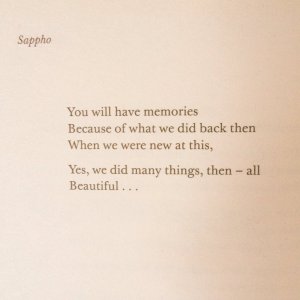
 Tampa is a novel about a female school teacher who is a sexual predator, her victims of choice being fourteen year old boys. It’s told from the perspective of the teacher, Celeste, and this makes it even more provocative and difficult to process. She is a sociopath who exploits everyone around her in order to achieve her goal: grooming and sexually abusing pubescent boys. Her behaviour is so strange, irrational and cruel, but it’s not conveyed in an unrealistic manner. Your feelings of horror, disgust and morbid curiosity towards Celeste are real, and that’s what makes Tampa so unnerving.
Tampa is a novel about a female school teacher who is a sexual predator, her victims of choice being fourteen year old boys. It’s told from the perspective of the teacher, Celeste, and this makes it even more provocative and difficult to process. She is a sociopath who exploits everyone around her in order to achieve her goal: grooming and sexually abusing pubescent boys. Her behaviour is so strange, irrational and cruel, but it’s not conveyed in an unrealistic manner. Your feelings of horror, disgust and morbid curiosity towards Celeste are real, and that’s what makes Tampa so unnerving.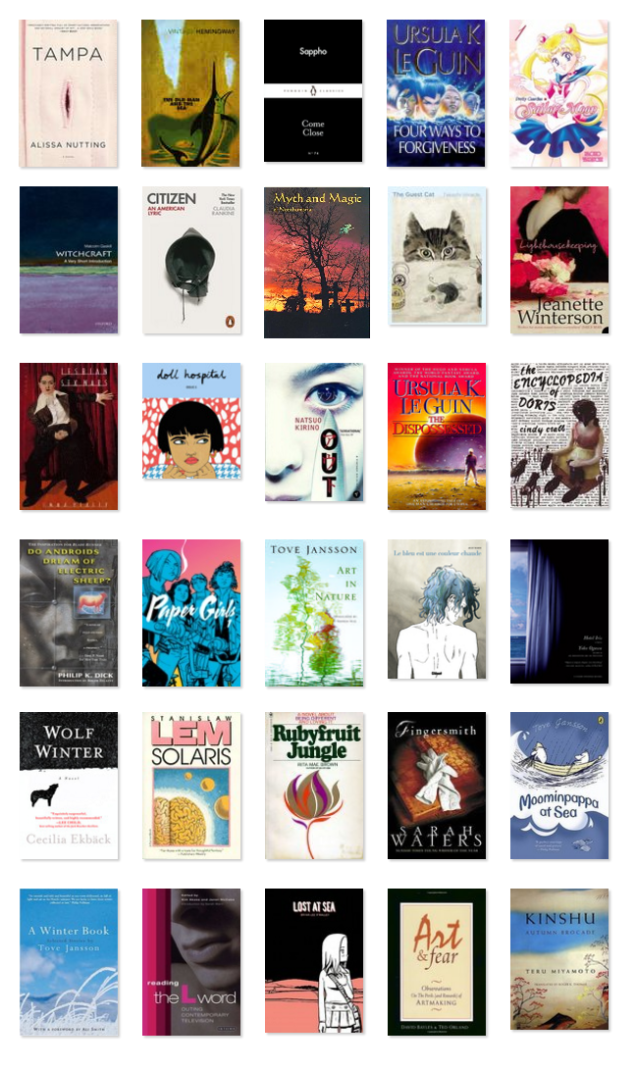
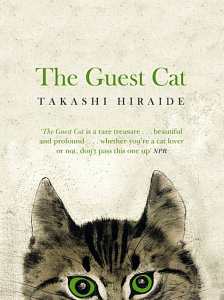 On paper, this is exactly the kind of book I’d like. It’s about a cat, it’s Japanese fiction, it’s set in Tokyo…unfortunately, The Guest Cat disappointed me. It is about a couple who are both writers, and is mainly concerned with their fascination with the neighbouring cat which comes to visit their house and garden every day. The couple’s relationship seemed lacklustre (maybe that’s the point?) and there was a sense of boredom and ennui throughout the novel. For me, this wasn’t conveyed poignantly enough. It was slow-paced and slightly melancholy, but I just couldn’t sympathise with the characters. I kept waiting for a twist, or a point where the plot picked up, which never really came.
On paper, this is exactly the kind of book I’d like. It’s about a cat, it’s Japanese fiction, it’s set in Tokyo…unfortunately, The Guest Cat disappointed me. It is about a couple who are both writers, and is mainly concerned with their fascination with the neighbouring cat which comes to visit their house and garden every day. The couple’s relationship seemed lacklustre (maybe that’s the point?) and there was a sense of boredom and ennui throughout the novel. For me, this wasn’t conveyed poignantly enough. It was slow-paced and slightly melancholy, but I just couldn’t sympathise with the characters. I kept waiting for a twist, or a point where the plot picked up, which never really came.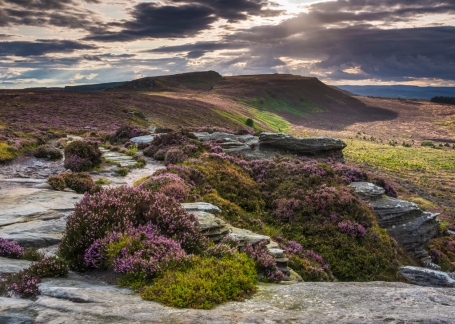

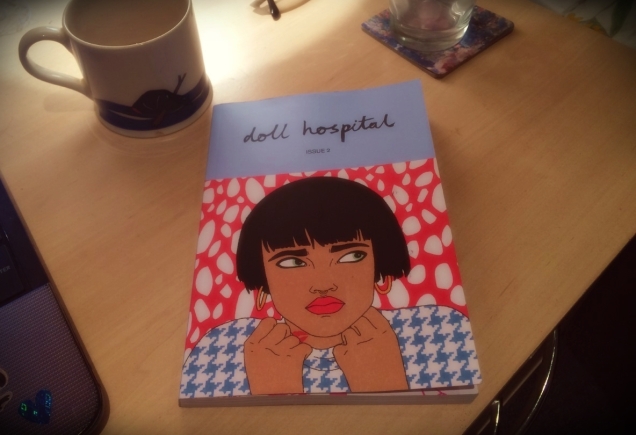
 Firstly you might be wondering: what is a ‘perzine’? Or even, what is a ‘zine’? Zines are handmade, low budget magazines, usually on a specific topic such as certain bands, feminism, travel, or personal experiences. They are usually made with the help of a photocopier and some staples or thread. A perzine is a category of zine which often reads like a diary, with the author writing about their life, thoughts and feelings.
Firstly you might be wondering: what is a ‘perzine’? Or even, what is a ‘zine’? Zines are handmade, low budget magazines, usually on a specific topic such as certain bands, feminism, travel, or personal experiences. They are usually made with the help of a photocopier and some staples or thread. A perzine is a category of zine which often reads like a diary, with the author writing about their life, thoughts and feelings. Wow. I read this entire book on the plane back from Japan, which to be fair was two long-haul flights, but it’s quite a thick book and I stormed through it. Out is a Japanese crime novel which begins with a frustrated and beaten-down housewife strangling her husband to death, and then employing the help of her coworkers at a factory to dispose of the body and evidence. It is tense and intense. Like, The Killing tense. Or Se7en tense. Interestingly, it’s told from the perspective of the murderer and accomplices, but you’re totally rooting for them, and the guilt and threat of being caught makes you even more on edge.
Wow. I read this entire book on the plane back from Japan, which to be fair was two long-haul flights, but it’s quite a thick book and I stormed through it. Out is a Japanese crime novel which begins with a frustrated and beaten-down housewife strangling her husband to death, and then employing the help of her coworkers at a factory to dispose of the body and evidence. It is tense and intense. Like, The Killing tense. Or Se7en tense. Interestingly, it’s told from the perspective of the murderer and accomplices, but you’re totally rooting for them, and the guilt and threat of being caught makes you even more on edge.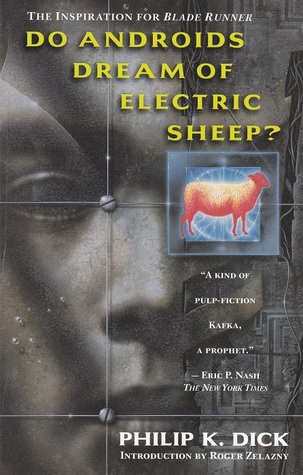 I have been meaning to read Androids since doing a module on dystopian fiction in high school, but for some reason didn’t get round to it. I watched Blade Runner a few months ago which gave me a push to finally read it.
I have been meaning to read Androids since doing a module on dystopian fiction in high school, but for some reason didn’t get round to it. I watched Blade Runner a few months ago which gave me a push to finally read it.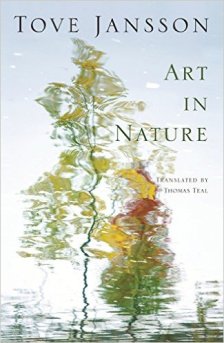 Art in Nature is a collection of many short stories. In this respect it is quite similar to A Winter Book, which I read earlier this year; however, A Winter Book drew more on the author’s childhood and family experiences, whereas Art in Nature perhaps explores the role of the artist/writer/illustrator/cartoonist, depending on each story. In this way I think it reflects the anxieties or problems each medium of art brings; maybe fiction was a way for Jansson to exorcise this.
Art in Nature is a collection of many short stories. In this respect it is quite similar to A Winter Book, which I read earlier this year; however, A Winter Book drew more on the author’s childhood and family experiences, whereas Art in Nature perhaps explores the role of the artist/writer/illustrator/cartoonist, depending on each story. In this way I think it reflects the anxieties or problems each medium of art brings; maybe fiction was a way for Jansson to exorcise this.
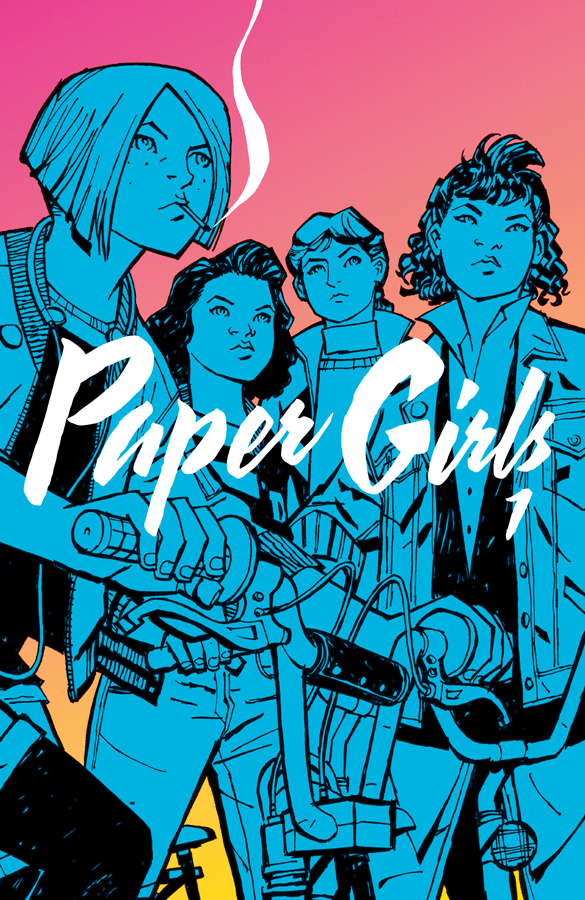

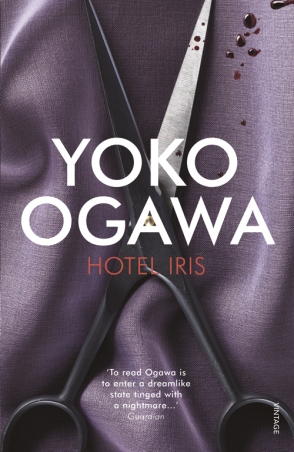 I’ve read two other books by Ogawa, The Diving Pool and Revenge, and I think she is an amazing writer. Her stories are dark — and I mean dark — they seem to tap into subconscious desires and fears and everything twisted and spiteful and morbid about being human. Hotel Iris is set in a seasonal seaside town, where a 17 year old girl lives and works with her oppressive mother in their hotel. She is treated like a child and given no free time to socialise with other people her own age. The story begins with an incident at the hotel; an altercation between an older man and a sex-worker. The girl is drawn to the older man and his dominating manner, and enters into a strange relationship on the island off the coast where he lives, where she finds pleasure being hurt, degraded and humiliated.
I’ve read two other books by Ogawa, The Diving Pool and Revenge, and I think she is an amazing writer. Her stories are dark — and I mean dark — they seem to tap into subconscious desires and fears and everything twisted and spiteful and morbid about being human. Hotel Iris is set in a seasonal seaside town, where a 17 year old girl lives and works with her oppressive mother in their hotel. She is treated like a child and given no free time to socialise with other people her own age. The story begins with an incident at the hotel; an altercation between an older man and a sex-worker. The girl is drawn to the older man and his dominating manner, and enters into a strange relationship on the island off the coast where he lives, where she finds pleasure being hurt, degraded and humiliated.